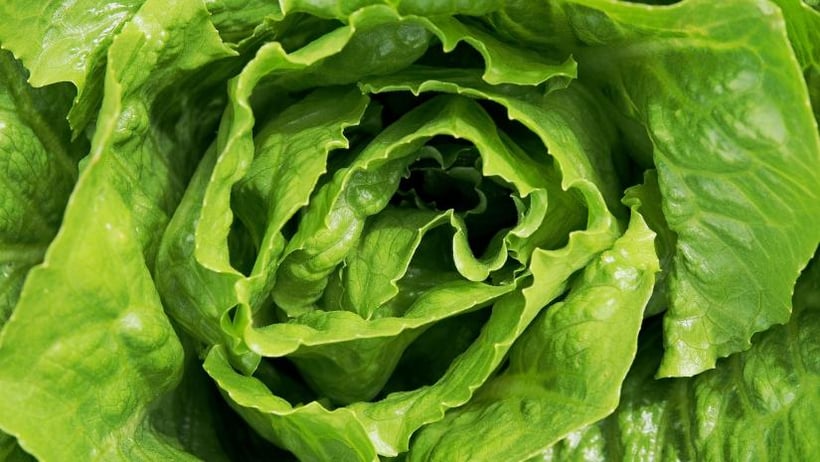
The United States Centers for Disease Control and Prevention (CDC), the US Food and Drug Administration (FDA) and the US Food Safety and Inspection Service (FSIS) are currently investigating an outbreak of E. coli linked to romaine lettuce from the Salinas, California growing region in the United States.
A total of 40 people infected with E. coli O157:H7 have been reported in 16 states, 28 of which required hospitalization. Five people have developed hemolytic uremic syndrome (HUS), a serious and potentially life-threatening condition that can cause kidney failure.
Although an outbreak is not occurring in Canada, the Public Health Agency of Canada (PHAC) has identified one Canadian illness with a similar genetic fingerprint, and the Canadian Food Inspection Agency (CFIA) has confirmed that romaine lettuce from the affected area is imported into Canada.
This is the fourth E. coli outbreak linked to romaine lettuce affecting Canadian consumers in the last two years.
What is E. coli?
E. coli is a type of bacteria that lives in the intestines of people and some animals. Most strains of E. coli are harmless, but some can cause severe food-borne diseases, particularly Shiga toxin-producing E. coli (STEC) like E. coli O157:H7.
E. coli can cause serious, life-threatening illnesses, and is particularly dangerous for certain high-risk groups (‘vulnerable populations’), such as pregnant women, young children, the elderly and people with medical conditions that affect the immune system.
How do you get E. coli?
The most common way that people become infected with E. coli bacteria is by eating contaminated food, particularly undercooked ground beef and fresh produce.
To prevent food-borne infections from E. coli, chefs, cooks and other food service workers must receive food safety training that covers the following (and additional) topics related to food safety and hygiene:
- proper food storage
- safe cooking temperatures
- preventing cross-contamination
- effective cleaning and sanitizing
Food safety training and education is critical to ensuring food safety in a restaurant or food retail establishment.
What are the symptoms of E coli infection?
People usually get sick between two and eight days after exposure to dangerous strains of E. coli bacteria. Symptoms of E. coli infection may include:
- abdominal pain
- nausea, vomiting
- watery or bloody diarrhea
Between five and 10% of people who become infected with Shiga toxin-producing E. coli develop hemolytic uremic syndrome (HUS). HUS develops about seven days after symptoms first appear, when diarrhea is improving.
It is important to know the symptoms of E. coli infection and the first signs of the development of HUS, particularly in children under the age of five. Symptoms to watch for include:
- decreased frequency of urination
- extreme tiredness
- loss of colour in the cheeks and inside the lower eyelids
Advice to consumers, restaurants and retailers
The CDC is advising consumers not to eat and retailers not to sell any romaine lettuce harvested from the Salinas, California growing region. PHAC is advising Canadians and Canadian food service businesses to follow the CDC’s advice.
This advice applies to all types of romaine lettuce harvested from Salinas, California, including (but not limited to):
- whole heads of romaine
- hearts of romaine
- packages of pre-cut lettuce
- salad mixes which contain romaine, including baby romaine, spring mix, and Caesar salad
ADVICE TO RESTAURANTS AND RETAILERS
The CDC is advising restaurants and retailers to:
- Check the label on bags or boxes of romaine lettuce to find out where the romaine lettuce was grown, or ask suppliers about the source of their romaine lettuce.
- Discard any products from the Salinas growing region, even if “Salinas” is one among several growing regions listed on the label.
- Discard any products that are not labeled with a growing region.
Suppliers, distributors and others in the supply chain are advised not to ship or sell romaine harvested in Salinas, California.
ADVICE TO CONSUMERS
The CDC is advising consumers to:
- Check labels on any romaine lettuce products showing where the romaine lettuce was grown. (It may be printed on the package or on a sticker.)
- Discard of any romaine lettuce products if the label says “Salinas” (whether alone or with the name of another location).
- Discard of any romaine lettuce products that are not labeled with a growing region.
- Discard of any pre-made salads or salad mixes if they may contain romaine lettuce. (If in doubt, throw it out.)
- Wash and sanitize drawers or shelves in refrigerators where romaine lettuce was stored.
Read more details about the recall and advice to consumers and food establishments.
Food safety in Canada
The Government of Canada is committed to food safety. The Public Health Agency of Canada (PHAC) leads the human health investigation into an outbreak and provides coordinated support to federal, provincial and territorial partners through the collection and sharing of data.
Health Canada works to reduce health risks to Canadians. It provides risk assessments to determine the level of risk a particular substance or organism can pose to human health.
The Canadian Food Inspection Agency (CFIA) conducts food safety investigations to help identify the source of an outbreak and remove it from the market.
The Canadian Institute of Food Safety (CIFS) provides high-quality food handling certification and food safety training to Canadian food workers, food business operators, managers and entrepreneurs.
The CIFS Food Handler Certification Course is government-approved across Canada, accepted by all local health authorities and recognized as food safe equivalent.





